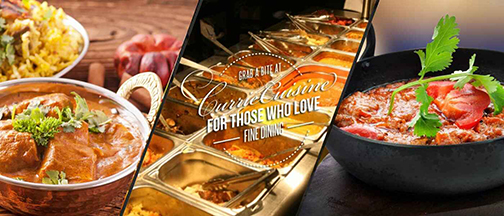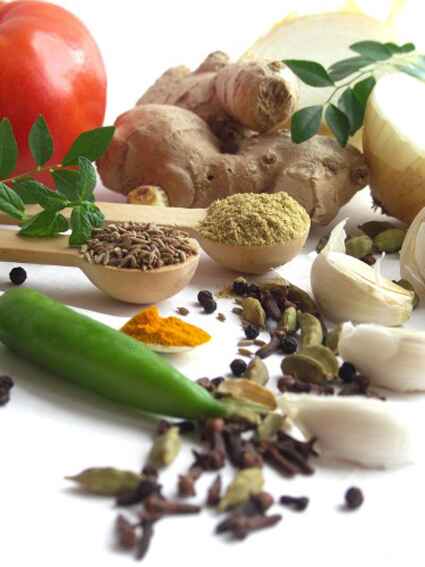| A Taste of Two Worlds: Balancing Authenticity and Local Preferences at UK's Indian Restaurants | ||
Introduction: Indian cuisine, known for its vibrant spices and diverse dishes, has become a staple in the United Kingdom. Yet, Indian restaurants face a unique challenge: maintaining the authenticity of their traditional dishes while catering to a wide array of local tastes and dietary preferences. This article explores how establishments, from Indian takeaway in Annfield Plain to the best Indian food spots in Stanley, successfully navigate this culinary balancing act. The Quest for Authenticity in Indian CuisineUnderstanding Authentic Indian Food
• Regional Diversity: India's culinary landscape is vast, with each region offering its own unique dishes and cooking styles. • Key Ingredients: Authentic Indian cuisine is characterized by the use of specific spices and ingredients such as cumin, coriander, cardamom, and ghee. Preserving Traditional Methods
• Cooking Techniques: Techniques like slow cooking, tandoori grilling, and dum cooking are essential to achieve the depth of flavor synonymous with Indian cuisine. • Recipe Integrity: Many chefs are trained in India or come from a lineage of Indian chefs, ensuring traditional recipes are passed down and preserved. |
||
 |
||
Catering to Local Tastes and Dietary PreferencesAdapting to British Palates• Mild Spicing: While traditional Indian dishes might be high on heat, many restaurants offer milder versions to cater to local tastes without compromising on flavor.• Fusion Dishes: Some Indian restaurants introduce fusion dishes that blend Indian cooking techniques with British ingredients, creating appealing innovations like masala fish and chips. Meeting Dietary Needs• Vegetarian and Vegan Options: Given India's rich tradition of vegetarian cooking, Indian restaurants easily cater to vegetarian and vegan diets with a variety of plant-based dishes.• Gluten-Free Choices: Many Indian dishes are naturally gluten-free, which is communicated clearly on menus to assist those with dietary restrictions. The Role of Indian Takeaway and Home DeliveryExpanding Culinary Horizons• Accessibility: With the rise of Indian takeaway and home delivery, enjoying authentic Indian cuisine at home has never been easier, allowing more people to explore a wider range of dishes.• Convenience: Services like Indian food delivery in Stanley mean that even those unfamiliar with Indian food can try it conveniently, which helps in gradually developing a taste for more authentic flavors. Marketing Authentic Dishes• Educational Menus: Some eateries provide descriptions of dishes and their origins, helping educate customers about what makes them authentically Indian.• Promotional Events: Hosting events like Indian food festivals or chef specials can introduce patrons to traditional dishes they might not otherwise order. Challenges in Balancing Authenticity and AdaptationKeeping Authenticity Alive• Ingredient Availability: Sourcing authentic ingredients can be challenging; however, many chefs collaborate with local farmers and suppliers to grow traditional Indian herbs and spices in the UK.• Training Staff: Ensuring that all kitchen and front-of-house staff understand the importance of authenticity and can convey this to customers is crucial. Overcoming Misconceptions• Spice Myths: Dispelling the myth that all Indian food is extremely spicy is necessary to attract a broader audience.• Cultural Appreciation: Educating patrons about the diversity within Indian cuisine itself helps prevent stereotyping and encourages exploration of lesser-known regional dishes.  Future Prospects for Indian Restaurants in the UKInnovation and Adaptation• New Culinary Frontiers: As the British palate becomes more adventurous, there is scope for introducing more regional dishes from India that have not yet been explored.• Health-Conscious Menus: Adapting traditional recipes to cater to health trends without losing their essence is an ongoing opportunity for growth. Strengthening Community Ties• Local Collaborations: Collaborating with local food bloggers, chefs, and cultural festivals can help Indian restaurants integrate more deeply into the community.• Sustainability Practices: Adopting environmentally friendly practices can appeal to the eco-conscious consumer and help establish a brand's commitment to sustainability. ConclusionIndian restaurants in the UK successfully balance the authenticity of their cuisine with the necessity to cater to diverse local tastes and dietary needs. This delicate balance not only preserves the rich culinary heritage of India but also enriches the British dining landscape. Whether through a bustling Indian restaurant near you or via Indian takeaway and home delivery, these establishments continue to offer a taste of India, tailored to the palates and preferences of their British clientele.This exploration provides a comprehensive look at how Indian cuisine is being preserved and adapted in the UK, promising an ongoing feast of flavors that respects traditional roots while embracing a new context. FAQs: Balancing Authenticity and Local Preferences at Indian Restaurants in the UK1. What is considered authentic Indian food in the UK?• Authentic Indian food encompasses a wide variety of regional dishes from India, characterized by specific spices and traditional cooking techniques like tandoori grilling and slow cooking. Authenticity also involves preserving traditional recipes and methods handed down through generations.2. How do Indian restaurants in the UK adapt their dishes to local tastes?• Many Indian restaurants adjust the spice levels to suit milder British palates and introduce fusion dishes that combine Indian cooking techniques with British ingredients, such as masala fish and chips.3. What kind of dietary preferences do Indian restaurants in the UK cater to?• Indian cuisine naturally accommodates a range of dietary preferences including vegetarian, vegan, and gluten-free options. Many dishes are plant-based and many traditional breads and gravies do not contain gluten.4. How has Indian takeaway and home delivery impacted the popularity of Indian cuisine in the UK?• Indian takeaway and home delivery services have made it easier for more people to access and enjoy authentic Indian cuisine from the comfort of their homes. This convenience has helped broaden the customer base and has introduced Indian culinary traditions to a wider audience.5. What are some challenges Indian restaurants face in maintaining authenticity in the UK?• Challenges include sourcing authentic ingredients locally, training staff to understand and convey the importance of authenticity, and overcoming misconceptions about Indian cuisine, such as the idea that all Indian food is extremely spicy.6. How do Indian restaurants educate their customers about authentic Indian cuisine?• Restaurants often use educational menus that describe dishes and their origins, and host promotional events such as Indian food festivals or chef specials to introduce customers to traditional dishes.7. What future trends might influence Indian restaurants in the UK?• Trends include exploring lesser-known regional dishes from India, adapting recipes to meet health-conscious demands without compromising authenticity, and implementing sustainable practices to appeal to environmentally conscious consumers.8. How do Indian restaurants contribute to local communities in the UK?• Indian restaurants enhance community engagement by participating in local festivals, collaborating with local food influencers and cultural events, and supporting local agriculture through the sourcing of ingredients. | ||
 |
||
